Xiaomi
Xiaomi Redmi 8: not far from breaking the shack
Aprox. 164€ - see price -
See specificationsIn the Xiaomi family, the Redmi 8 is the entry-level smartphone. Positioned at less than 170 €, it is not technically stingy.
Our review
Presentation
Xiaomi launched a host of smartphones in 2019 and the Redmi 8 should be one of the last in the batch of this vintage. The Chinese mobile logically replaces the Redmi 7, just 6 months after the launch of the latter. A very short delay that did not really leave time for Xiaomi to review the recipe for its entry-level. This market niche is occupied in particular by models like the Nokia 3.1 Plus, the Gigaset GS195 or the Samsung Galaxy A20e.
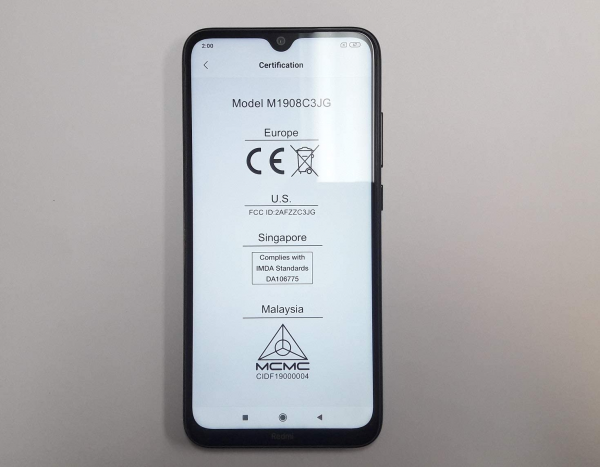
Ergonomics and design
We can not say that Xiaomi is really sprained for the design of its Redmi 8. The Chinese manufacturer has taken over the main lines of the Redmi 7 to offer a mobile still successful. At the front, the large 6.2-inch diagonal screen is framed only by thin borders. Thus it occupied 81.6% of the surface. There remains a lower border wider than the other 3 and a notch in the form of a drop of water to accommodate the front camera.
The handling of the Redmi 8 is very good. Its rounded shapes allow it to easily fit the palm of the hand, offering a secure grip. The rear face is rather elegant for a terminal sold for less than 170 €. However, the glossy coating often tends to catch fingerprints. A problem largely mitigated when using a shell, of course.
Still on the back of the mobile, there is a fingerprint reader, ideally positioned to be reached from the tip of the index finger when the smartphone is in hand. Its operation is no problem and unlocking through this reader is fast. On its lower edge, the Redmi 8 incorporates a USB-C port, still rare at this price. Good news, it is accompanied by a 3.5 mm mini-jack plug. Finally, the Xiaomi Redmi 8 can accommodate 2 nano-SIM cards and a microSD card, which is handy.
The headphone output is quite satisfactory overall. Devoid of annoying distortion, it also offers a fairly wide dynamic range and a correct reproduction of the stereo image. The only downside is that the output level is not the highest and could handicap users of particularly demanding headsets.
As often on the entry level, the Redmi 8 has only one speaker for multimedia. Placed on the lower edge, it will hardly be suitable for more than calls and a few small videos as it focuses on the rendering of voices - which it does correctly - forgetting all the rest of the spectrum.
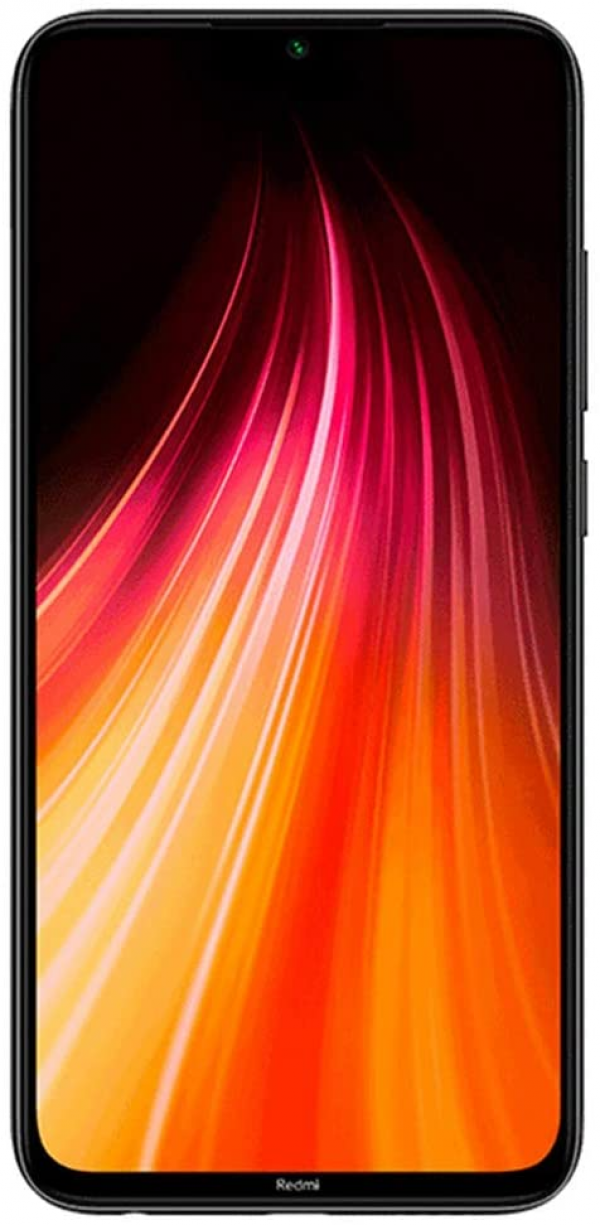
Screen
The days when entry-level smartphones were decked out in mediocre screens are long gone. Now, we are lucky to find good displays, even on mobiles like the Redmi 8. Admittedly, we must always be satisfied with an LCD panel and not Oled, but we measure a satisfactory contrast ratio of 1,750: 1. The maximum brightness of 450 cd / m² and the light reflection rate of 45.8% ensure good readability, even in direct sunlight. A point on which many entry-level terminals ignore. We may regret that the HD + definition (1520 x 720 px) somewhat limits the finesse of the display, but we can be satisfied with it for a large part of the uses.
This is a constant at Xiaomi, you have to go through the phone settings to adjust the display and get good color rendering. Here, choose the "warm" profile for the color temperature and the "default" display mode - contrary to what logic would like, this display mode is not the one selected by default. Once these adjustments have been applied, we measure an excellent delta E at 2.5, attesting to faithful colors. The color temperature is established at 6,790 K, close to the expected standard (6,500 K).
The only point on which the screens of smartphones hardly progress remains that of the reactivity. The Redmi 8 is no exception to the rule with a tactile delay time measured at 118 ms and a persistence time of 16 ms.
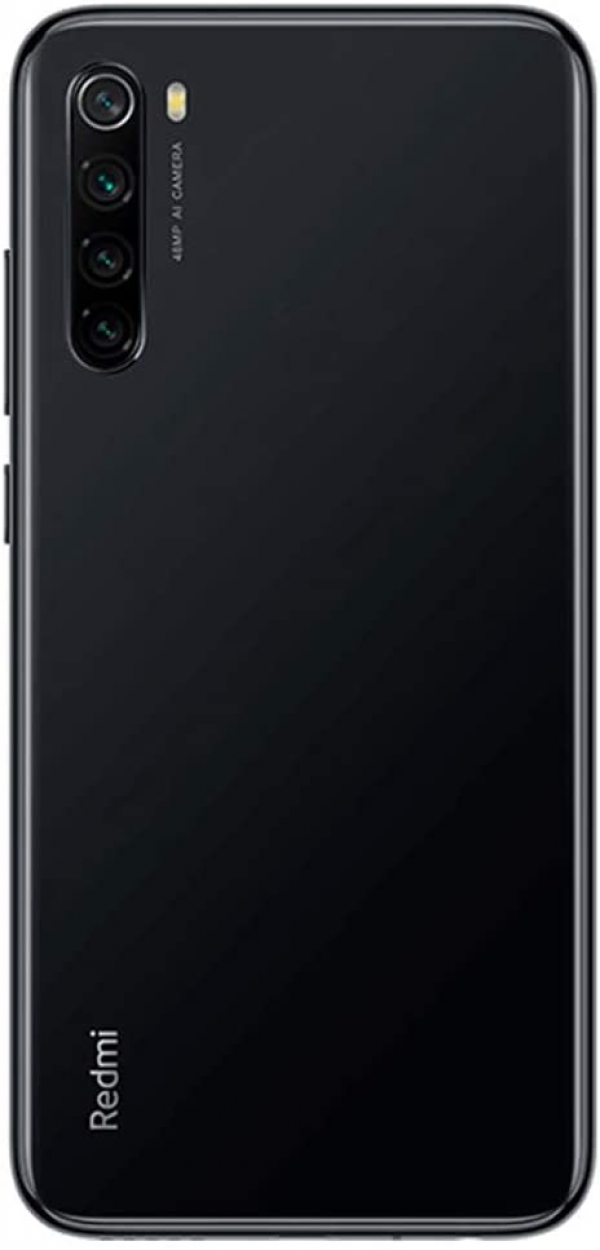
Performances
This part is one of the big disappointments of this Redmi 8. Xiaomi chose a Qualcomm Snapdragon 439 SoC, certainly more recent than the Snapdragon 632 of the Redmi 7, but less efficient. On our test protocol which simulates the launch of several applications and the transition from one to the other, the Redmi 8 obtains an index of 77. This is still correct given the price of the mobile, but a slight notch below the Redmi 7 (80 ).
It is especially in the video game discipline that the Redmi 8 retreats compared to its predecessor. The iGPU Adreno 505 does not even allow it to reach an index of 40 on our video game test. On this point, the Redmi 7 climbed to 53, therefore ensuring a better fluidity in the titles a little bit demanding. This should not be a big problem, however, if you just plan to launch a Candy Crush from time to time.
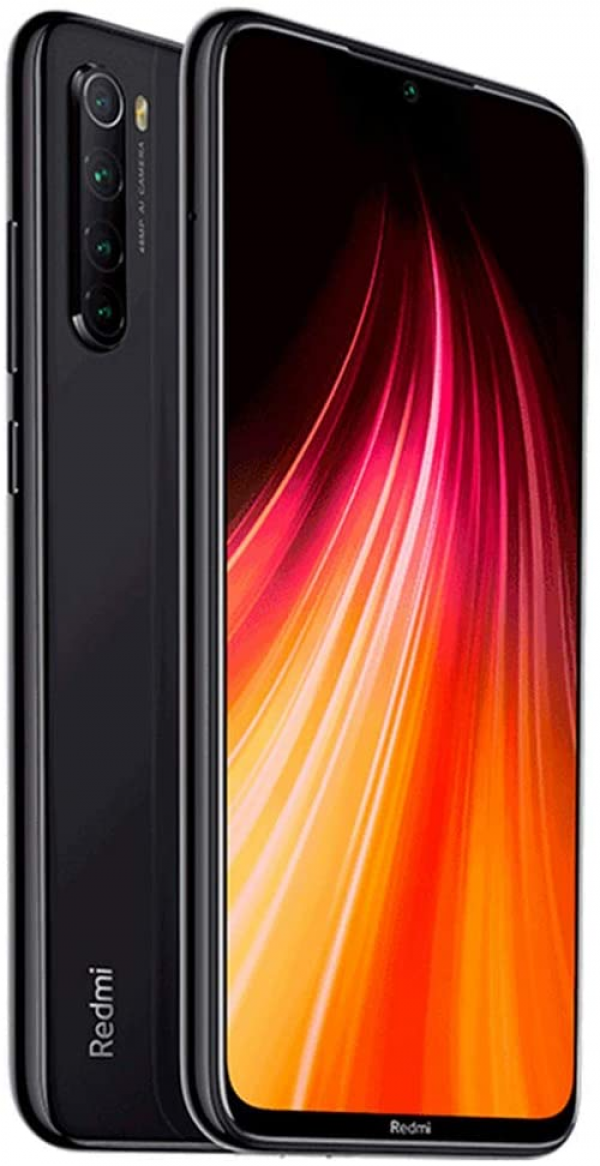
Photo
While Xiaomi has reached new heights by equipping its Mi Note 10 with 5 photo modules, including one with a 108 megapixel sensor, the Redmi 8 remains much wiser. The mobile has "only" two photo modules, one of which is only there to make depth of field measurements for portrait mode. The other module is based on a 12 megapixel sensor and an equivalent 27 mm lens opening at f / 1.8.
In broad daylight, the Redmi is capable of producing correct shots. The level of detail is interesting for an entry-level smartphone. We do however regret the somewhat cold rendering of the image and the dull colors. It is still a correct performance.
In low light, the task becomes more complicated. Electronic noise management is particularly complex and does not always manage to smooth out properly. The colors fade sharply and the pictures are just usable.
No ultra-wide angle or 2x zoom module, but the Redmi 8 still offers portrait mode. However, the result is quite random. The cutting of the subject is not the most precise that we have seen and the wide-angle focal length does not help to frame effectively.
Video recording enthusiasts will be able to film in Full HD at 30 fps at best. As in the photo, it is better to confine oneself to sufficiently bright environments. Otherwise, the electronic noise settles too much to exploit the images.
Selfie capture is left to an 8-megapixel sensor. The pictures taken from this front camera are quite good for an entry-level smartphone. Certainly, image processing forces a lot of accentuation of contrasts, but the management of backlighting and the level of details are satisfactory.
Autonomy
A 5000 mAh battery, a low-power SoC and a poorly defined screen: the ingredients are there for the Redmi 8 to show great endurance. On our SmartViser test protocol, the Xiaomi mobile will have lasted for 19 h 15 min. It is a very slight notch below the score of the Redmi 7, but it still places the Redmi 8 among the very good students of the discipline. In practice, it will be able to hold without problem for 2 good days in the event of standard use. More sustained use will rarely see the smartphone claim its charger before the morning of the second day.
With the charger provided by Xiaomi, it takes 2 h 30 min to fully charge the Redmi 8.
Conclusion
In line with what Xiaomi has been offering for some time, the Redmi 8 is a good value for money. Too bad his performance is not a bit better, because he would have really passed a course. The Redmi 8 is ultimately revealed as a good smartphone for a first equipment or if you do not want to spend too much money on the purchase of a mobile. From time to time, its price drops below 150 €, which reinforces its interest.
Specifications
Reviews

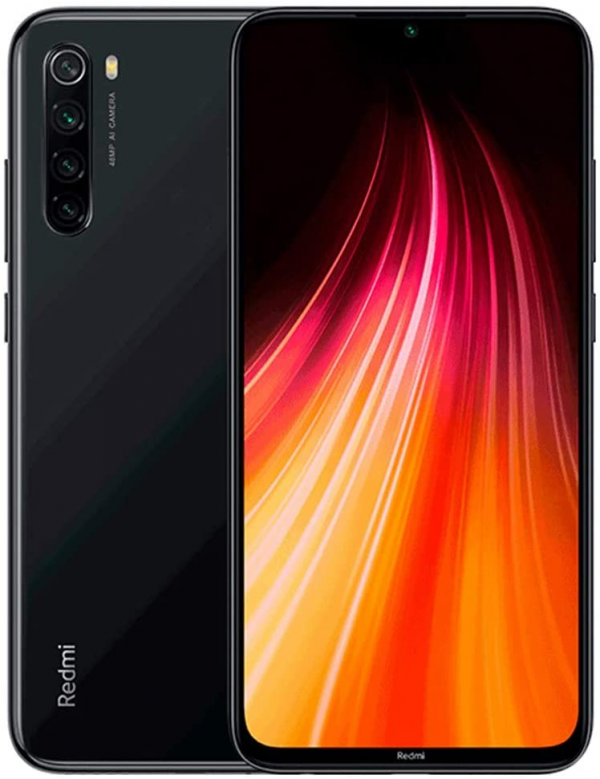
International is not Global (Not US compatible)
For someone who is unfamiliar with the terms for foreign produced cell phones, international sounds like it would work internationally. Many of the questions are "will this work with X network" and people reply yes, it is an international phone. International phones are not produced to work particularly well in the US, and do not often have the LTE bands necessary to have good service. CHECK THE BANDS NECESSARY WITH YOUR PROVIDER!
Also, these often tend to be Chinese versions of the phone with the Global ROM flashed over the original Chinese ROM. This means that you could have issues with updates and such, limiting your use and enjoyment of the phone.
This phone may work well for you, however, make sure it works with your network and that you do want the international version instead of the global version.
Why bother with overpriced flagship phones?
First of all, contrary to another review, this phone DOES work in the US. I'm on Mint Mobile and I've had 4g LTE in Upstate NY, Chicago and Seattle. Even backroads where I had no signal with Sprint towers, I've got more now.
With that being said, I love this phone. I was using a Galaxy S7 since 2015 and the difference between the two is night and day. Apps load quick, I can fly my drone without worrying and there's a ton of new features here with Android 9 (and soon to be Android 10)
My main concern going in was reports of unnecessary bloatware and ads, but after switching to a third party launcher and disabling all the "recommendations" in Settings my phone is ad free.
Can't recommend enough, and I think I'll be sticking with Redmi phones for a long time. It's a high powered unlocked Android device.
Best budget phone
Fantastic phone for sub $ 200. Fast, good camera, good space, good battery. Working great on T-Mobile (I'm in NYC) plays all modern game great and online video (Netflix, YouTube, Amazon) work great. Screens beautiful. No complaints.
Camera sucks - 48mp and 4 camera doesn't mean the pictures will be good
I was looking for a replacement for a kid's phone, she have a xiaomi mi a2 to play games, take pics and message her friends. I thought this would be a good replacement due to the full screen and a 48mp camera to take pics. But it is not much better, in a odd way I thought it was worst. I compared this phone to my Samsung Note 10 and my daughter's Mi a2, this is what I found. To no surprise the Note 10 takes much better pictures, is faster and just better in every way. I am not taking off any stars due to this since the Note 10 is a much better phone. I am giving this 3 star because it is just a little bit better than the Mi A2. It is a better looking phone, it feels like a high end phone while in hand than the A2, it is faster (not by much), more memory, bigger and better screen, but the most important and the item that made me want to buy this phone in the first place was the camera. The camera was subpar considering Xiaomi is advertising how good this camera is.
Indoor pics - sucks - The A2 took better pics indoor
Night mode - sucks - almost useless - note sure if I am comparing this to the Samsung but its useless
Macro - sucks - A2 took better pics and it doesn't even have this option / feature
The camera was such a disappointment that I reset the phone and printed out a return label. I did not even take this outdoor to test it, since indoor sucked and might of be half the pics she will take I decided it is not even worth continuing to test it.
Good:
Faster than the A2, comparable to mid end phones
Full body screen
Loud speakers - Keyword is loud, not nice sounding
Its very nice to look at
Price
Wide angle camera
Bad:
Camera - indoor, night, macro, front / selfie camera all sucked
Speed - lags a little bit
I did not feel that it was worth upgrading to this phone from the A2 even when the A2 is already a year or two older. Thats how bad I thought it is. Either the A2 is really good or this is really bad. This phone on paper should be been easily much better. Like day and night difference. This is why it gets 3 stars.
Included charger does not work in US
The phone is really nice. I don't have any complains to the phone. However the charger included is for somewhere else. It does not fit in the power outlet in US. So I have to use my existing charger instead.
COMPRA DESDE ARENTINA REDMI XIAOMI REDMI NOTE 8
EL TELEFONO LO COMPRE EL 13 DE ENERO, SE IMPACTO Y COBRO EL 15 DE ENERO.
RECIBIDO EL 20 DE ENERO IN LA PUERTA DE MI CASA
COMPRE DOS TELEFONOS XIAOMI REDMI NOTE 8 DE64 GB
ANDA BIEN ES 4G LTE LIBRE
TENO PERSONAL Y ANDA BIEN
COME WITH A TRANSPARENT FUNDA,
CARGADOR
USB
LLAVESITA PARA RANURA
TODO PERFECTO HASTA AHORA
LOS EQUIPOS ITS HERMOSOS
LOS RECOMIENDO TOTALMENTE
One of the best budget phones!
This phone is amazing! The cameras shoot well, the speakers are loud, the display is clear. There's nothing to really complain about on this phone. I am using Cricket (which uses AT&T) and the phone gets really well service with LTE data. Bluetooth products like Wireless headphones / earbuds and smartwatches work with this product. Android auto works fine as well. My only complaints are that the fitbit versa 2 doesn't receive text notifications, just phone calls. The Air Pods do work, however might not perform to their full potential, however it is still really good. And last, Android Auto does work with this phone, I just need to open spotify before plugging in my phone or it doesn't show up on the screen, I could hear the music but can't interact with spotify on the dash screen unless I started spotify on my phone before plugging my phone into my car. All in all, this phone is outstanding for the price and a great replacement phone.